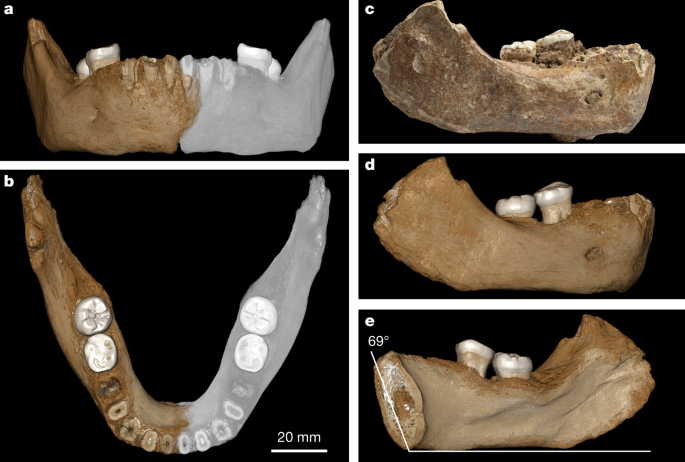Biggest Denisovan fossil yet spills ancient human's secrets
https://www.nature.com/articles/d41586-019-01395-0
Scientists have uncovered the most complete remains yet from the mysterious ancient-hominin group known as the Denisovans. The jawbone, discovered high on the Tibetan Plateau and dated to more than 160,000 years ago, is also the first Denisovan specimen found outside the Siberian cave in which the hominin was uncovered a decade ago — confirming suspicions that Denisovans were more widespread than the fossil record currently suggests.
The research marks the first time an ancient human has been identified solely through the analysis of proteins. With no usable DNA, scientists examined proteins in the specimen’s teeth, raising hopes that more fossils could be identified even when DNA is not preserved.
“This is fantastic work,” says Katerina Douka, an archaeologist at the Max Planck Institute for the Science of Human History in Jena, Germany, who runs a separate project aiming to uncover Denisovan fossils in Asia. “It tells us that we are looking at the right area.”
Hunting for Denisovans
Until now, everything scientists have learnt about Denisovans has come from a handful of teeth and bone fragments from Denisova Cave in Russia’s Altai Mountains. DNA from these remains revealed that the Denisovans were a sister group to Neanderthals, both descending from a population that split away from modern humans about 550,00–765,000 years ago. And at Denisova Cave, the two groups seem to have met and interbred: a bone fragment described last year belonged an ancient-human hybrid individual who had a Denisovan father and Neanderthal mother.
<more>

Them's some big wisdom teeth
